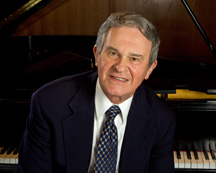 When I was a 5-year-old beginner piano student, I remember being re-assigned one-/two-line method book pieces when the only thing lacking was dynamic contrast. And I remember being frustrated with this. My frustration was partly due to the fact that I was bored with the music I was playing; I wanted to be reading staff notation instead of pre-staff notation, as my mother taught me to do before she found me a piano teacher. Regardless, having to re-practice pieces that were already mastered, due to forgetting to drop from forte-piano to piano in one place was a hard thing for me to swallow.
When I was a 5-year-old beginner piano student, I remember being re-assigned one-/two-line method book pieces when the only thing lacking was dynamic contrast. And I remember being frustrated with this. My frustration was partly due to the fact that I was bored with the music I was playing; I wanted to be reading staff notation instead of pre-staff notation, as my mother taught me to do before she found me a piano teacher. Regardless, having to re-practice pieces that were already mastered, due to forgetting to drop from forte-piano to piano in one place was a hard thing for me to swallow.
Looking back, I do realize the importance of dynamics. As a teacher, I am a stickler about them even with the most beginner of students. However, as tempting as it is, I do not generally reassign a beginning-level piece from a method book if the ONLY thing lacking is the dynamics. I have decided that holding a student back in their progress is not worth it, because learning to observe dynamic markings is something that can be mastered over time through the next few pieces in their method books. Continue reading “Dynamics & The Beginner Piano Student”




 The next session was given by the fabulous Marvin Blickenstaff:
The next session was given by the fabulous Marvin Blickenstaff: